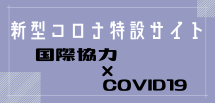Special Feature Articles on Healthcare and Medical Cooperation
Japan’s Strengths are Comprehensive Support
Kazuhiro Abe,
President,
International Techno Center Co., Ltd
The urgent task is to prevent the spread of infection at medical fronts
The COVID-19 pandemic is not over yet. However, the global challenge in the field of health care that has emerged from this situation is how to take measures to prevent healthcare-associated infection (HAI). This means the measures to prevent creating new infections not only in medical facilities but also in all places of medical care.
For example, patients who come to the hospital with wounds should not contract COVID-19 there, or medical personnel who have been to home care should not be affected. It is an essential measure to ensure the safety of medical care.
In Japan, the Ministry of Health, Labor and Welfare and local governments have created guidelines, and each medical institution has created and implemented manuals. However, in developing countries, even national guidelines have not been created yet. In terms of development cooperation, it is important to provide such institutional support.
Utilizing the results of technical cooperation projects
On the other hand, if you look at medical sites in developing countries, there are many things that need to be done not only to develop national guidelines, but also to create manuals for each medical institution based on guidelines and to implement them on site. In order to do so, Japan’s technology cooperation projects for human resource development cooperation should be utilized.
From 2014 to 2018, our company conducted technical cooperation in Myanmar to strengthen the management of healthcare plans. Medical sites in remote areas were constantly faced with labor shortages. Therefore, we started not from management lectures but from “D = do” of PDCA cycle (Plan, Do, Check and Action) taking up urgent problems for them. For health education in pediatric wards, health guidance by skits for expectant women, and improvement of the hospital hygiene environment, Japan’s approach of 5S/KAIZEN was introduced. Then the staff put them into practice.
Finally, they created the hospital’s own manual to prevent hospital acquired infections by extending 5S/KAIZEN activities based on the guidelines of the Ministry of Health. As a result of the technical cooperation project, it is more important for them to make, use, and improve manuals on their own than to complete manuals. The strengths of such technical cooperation projects could also be used to support future measures to prevent HAI.
Creating synergy effects
We are currently conducting technical cooperation projects such as the “Non-Infectious Disease Prevention Project” and the “Information Gathering and Confirmation Survey on the Demand for Remote Training on Hospital Infection Control” in Uzbekistan.
Through such technical cooperation, we are conducting health promotions, screening of lifestyle diseases, counseling, etc. in two states. Although such activities have not started due to the COVID-19 infection spread, we are conducting remote surveys and preparing baseline surveys. This technical cooperation also adds HAI prevention as one of the implementation policies.
In addition, information gathering and confirmation surveys are projects adopted in the COVID-19 crisis situation and are targeted at sites of technical cooperation. It is a demonstration-type investigation to conduct remote training on hospital infection control and to consider the future direction of cooperation.
In both projects, there are common issues, such as the prevention of HAI and the use of remote training, to be focused on in the COVID-19 crisis situation.
We would like to create synergies between the two projects. Japan’s health and medical cooperation, which has been a strength for more than 60 years in building hospitals with yen loans, providing medical equipment by grant aid, and human resource development and comprehensive initiatives in technical cooperation professionals, may include the possibility of creating such synergies. Japan should take such healthcare and medical cooperation as a new strength.
*****以下、日本語原文*****
特集・再考 日本の保健医療協力
日本の強みは総合的な支援
(株)国際テクノ・センター
代表取締役 阿部 一博氏
医療現場の感染拡大防止が急務
新型コロナウイルス感染症は、いまだ終息のめどは見えない。だが今回の事態から見えてきた保健医療分野における世界共通の課題は、医療関連感染(HAI)の防止対策をどう講じていくのかということだろう。これは、医療施設内に限らず、医療行為が行われる全ての場所において、新たな感染を生み出さないための対策を指す。例えば、傷を負って病院に来た患者がそこで新型コロナに罹患してしまったり、在宅医療に赴いた医療従事者が罹患してしまうなどあってはならないことで、医療の安全性の確保には必要不可欠な対策だ。
日本においては厚生労働省や各地方自治体がガイドラインを、各医療機関がマニュアルを作成し、運用している。だが,開発途上国では国レベルのガイドラインすら整備が進んでいない。開発協力ではこうした制度面の支援が重要だ。
技プロの成果を活用する
他方、途上国の医療現場に目を向けると、国のガイドラインを整備だけでなく、それに基づく医療機関ごとのマニュアル作成や現場の実践までやるべきことは多い。それには、日本の“人づくり”協力である技術協力プロジェクト(以下、技プロ)が活用できるはずだ。当社は2014~18年、ミャンマーで保健計画のマネジメント強化に向けた技プロを実施した。僻地の医療現場は人手不足で常に業務に追われていた。
そこで、マネジメントの講義からでなく、彼らにとっての喫緊の課題をとりあげPDCAの「D=実行」から始めた。小児病棟での保健教育や寸劇での妊産婦への健康指導、病院内の衛生環境改善には、日本の5S/KAIZENを紹介し、実際の活動はスタッフの主体性に任せた。
その結果、5S/KAIZEN活動の延長で院内感染防止にかかる病院独自のマニュアルを、保健省のガイドラインをもとに彼らが作成した。技プロの成果としては、マニュアルの完成よりも、彼らがそれを自力で作り、使い、改善していく力をつけることが重要だ。このような技プロの強みは、HAI防止にかかる今後の支援にも活用し得るであろう。
シナジー効果の創出を
当社は現在、ウズベキスタンで技プロ「非感染症疾患予防対策プロジェクト」と、「院内感染対策に関する遠隔研修の需要に係る情報収集・確認調査(QCBS)」を実施している。
技プロの方は2つの州を対象にヘルスプロモーションと生活習慣病のスクリーニング、カウンセリングなどを行うもので、コロナ禍で活動は始まっていないが遠隔での現況調査を実施し、ベースライン調査を準備中だ。この技プロでもHAI防止を実施方針のひとつに加えている。また情報収集・確認調査は、コロナ禍にて採択した案件で、技プロのサイトを対象としている。院内感染対策の遠隔研修を実際に行い、今後の協力方向性を検討するという実証型の調査だ。
両案件には、HAI防止、遠隔研修の活用など、コロナ禍で着目すべき共通の論点がある。両案件のシナジー効果を生み出していければと考えている。60年以上にわたり円借款での病院建設、無償資金協力での医療機器供与、技プロでの人材育成と総合的な取り組みを強みとしてきた日本の保健医療協力には、そうしたシナジー効果を創出できる可能性が多分に含まれているだろう。これを新たな強みとしていくべきではないだろうか。
国際開発ジャーナル 2021年1月号 掲載記事
(特集 再考 日本の保健医療協力より)



